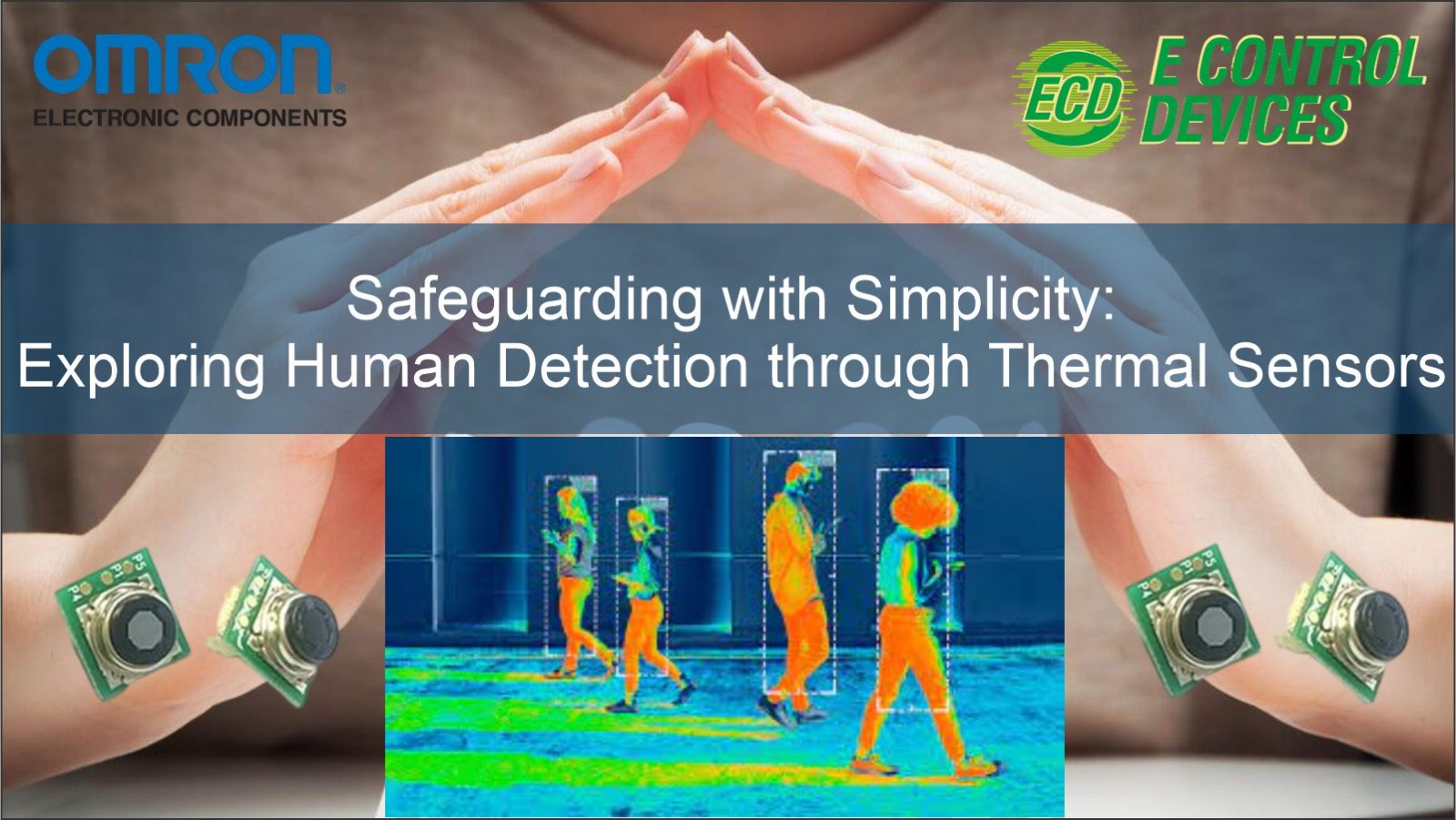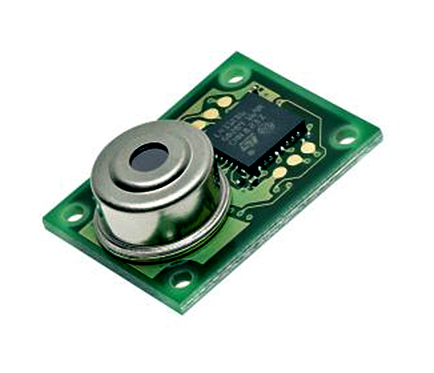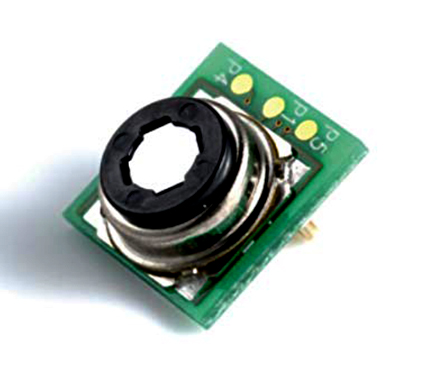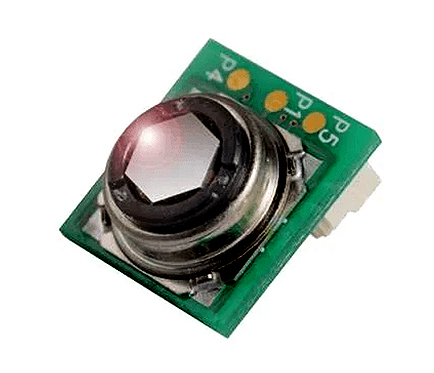Human detection plays a critical role in various contexts, ranging from security and surveillance to automation and healthcare. The ability to accurately detect human presence is fundamental for ensuring safety and optimizing resource utilization. In this blog, we will explore the potential of thermal sensors as a simple and effective solution for human detection. These sensors can perceive the infrared radiation emitted by humans, which is invisible to the naked eye. By analyzing the temperature variations in the detected heat signatures, thermal sensors can accurately identify and track human presence in a given area.
What are thermal sensors and how do they work?
Thermal sensors, also known as infrared sensors or thermal imaging sensors, are sophisticated devices that detect and measure the thermal radiation emitted by objects and convert it into a visual representation. Unlike traditional cameras that capture visible light, thermal sensors operate in the infrared spectrum, allowing them to detect heat signatures emitted by objects and individuals.
The working principle of thermal sensors is based on the fact that all objects emit thermal energy in the form of infrared radiation. These sensors contain an infrared detector that can detect and measure this radiation. The sensor captures the infrared radiation emitted by the objects in its field of view and converts it into an electrical signal. This signal is then processed and transformed into a visual image, commonly known as a thermal image or thermogram. The resulting image displays varying levels of heat as different colors or shades, providing valuable insights into temperature variations and heat distribution.
Best Offer Available
Omron D6T-1A-01 MEMS Thermal Sensor
Request For Price
Types of thermal sensors commonly used for human detection
- Uncooled thermal sensors
These sensors are commonly found in consumer-grade thermal cameras and devices. They operate at room temperature and do not require additional cooling mechanisms. Uncooled sensors are more affordable, compact, and energy-efficient, making them suitable for various applications such as home security systems, personal thermal cameras, and small-scale surveillance.
2. Cooled thermal sensors
Cooled sensors are often utilized in high-end thermal imaging systems that demand superior performance and sensitivity. These sensors are cooled to extremely low temperatures using cryogenic techniques, which enhances their ability to detect faint thermal signals. Cooled thermal sensors are commonly employed in military, scientific, and industrial applications where precise temperature measurements and long-range detection are critical.
Application of human detection through thermal sensors
As thermal sensor technology continues to evolve, companies anticipate even more innovative applications and advancements in the field of human detection. The power of thermal sensors helps create safer, more efficient environments, and improve the overall well-being of individuals in various contexts. Some of the applications of these sensors are:
- Security and Surveillance Systems
Contrasting conventional cameras, thermal sensors D6T-1A-01 excel in low-light scenarios, spotting human presence via heat signatures. Their effectiveness in perimeter protection, access control, and securing sensitive zones is unmatched.
2. Medical and Healthcare Applications
In medical contexts, thermal sensors offer non-invasive patient monitoring, facilitating early detection of potential health concerns. They gauge body temperature and identify anomalies, aiding in the prompt identification of fever, inflammation, or abnormal heat patterns.
3. Search and Rescue Operations
Thermal sensors play a pivotal role in search and rescue missions, particularly in challenging environments. By detecting body heat, they expedite the location of missing individuals, increasing the efficacy of rescue teams and saving vital time and lives.
4. Industrial and Workplace Safety
Industrially, thermal sensors 10142032-01 detect hazards like overheating machinery or gas leaks. Their early alerts prevent accidents, minimize downtime, and enhance worker safety in perilous settings like factories and construction sites.
Benefits of Human Detection with Thermal Sensors
Thermal sensors offer numerous benefits when it comes to human detection, making them an attractive option for a range of applications.
-
- They provide cost-effectiveness and ease of installation. Compared to complex systems, thermal sensors are relatively affordable and can be easily integrated into existing infrastructure without significant modifications.
- Thermal sensors detect the heat signatures emitted by humans, ensuring that no personally identifiable information is captured. This makes them a privacy-conscious choice, especially in sensitive environments.
- They are not affected by factors such as lighting conditions, smoke, or dust, making them suitable for both indoor and outdoor applications. Their ability to function effectively in challenging environments enhances their reliability and utility.
- Thermal sensors also minimize false positives and offer improved accuracy. By laying focus on heat emissions, they can differentiate between humans and other objects, reducing the likelihood of false alarms. This enhances the overall efficiency of human detection systems and reduces unnecessary disruptions or alerts.
Enhancing Security and Efficiency Through Human Detection via Thermal Sensors
In a bustling transportation hub, the integration of thermal sensors EKMB1109112 for human detection has revolutionized security and operational efficiency. Over a three-month period, the system accurately detected an average of 98.7% of human presence in diverse lighting conditions, outperforming traditional CCTV setups by 13%. This led to a significant reduction in false alarms, boosting security personnel’s response effectiveness.
The implementation also streamlined operations, with foot traffic analysis enabling optimized staff deployment, reducing bottlenecks by 27%, and enhancing overall passenger flow. Moreover, the system’s energy efficiency, consuming 25% less power compared to conventional visual systems, resulted in substantial cost savings. The success of this case underscores the reliability and multifaceted benefits of thermal sensors in enhancing security measures and operational dynamics across busy public spaces.
Conclusion
In a world where safety and security are paramount, embracing thermal sensor technology is a step towards safeguarding our surroundings and ensuring the well-being of individuals. Through the incorporation of thermal sensors into security systems, smart homes, healthcare facilities, and search and rescue operations, enhanced safety and security can be achieved. With ongoing advancements in thermal sensor technology and potential integration with AI and machine learning, the future of human detection holds even greater promise.




